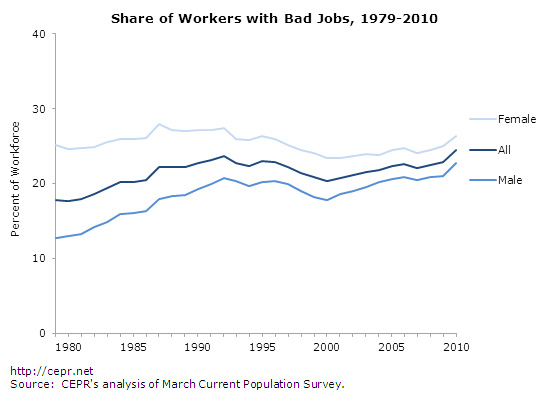September 07, 2012
Earlier this week, John Schmitt and I released a CEPR report on the rise of “bad jobs” over the past three decades. The new report is a follow-up to “Where Have All the Good Jobs Gone?“, which CEPR released in July. Together, the two papers are like looking at two sides of the same, depressing coin.
We define a bad job as one that pays less than $37,000 per year, lacks employer-provided health insurance, and has no employer-sponsored retirement plan. In 2010, the most recently available data, about 24 percent of U.S. workers were in a bad job, up from 18 percent of workers in 1979. The share of women in bad jobs only increased about 1 percentage point between 1979 and 2010; for men, there was a 10 percentage-point increase over the same period. But, at every point in the last 30 years, women were still more likely than men to be in a bad job.
The increase in bad jobs occurred even as the workforce, on average, became more educated and experienced –just the opposite of what we would not just hope for, but expect, from the economy.







